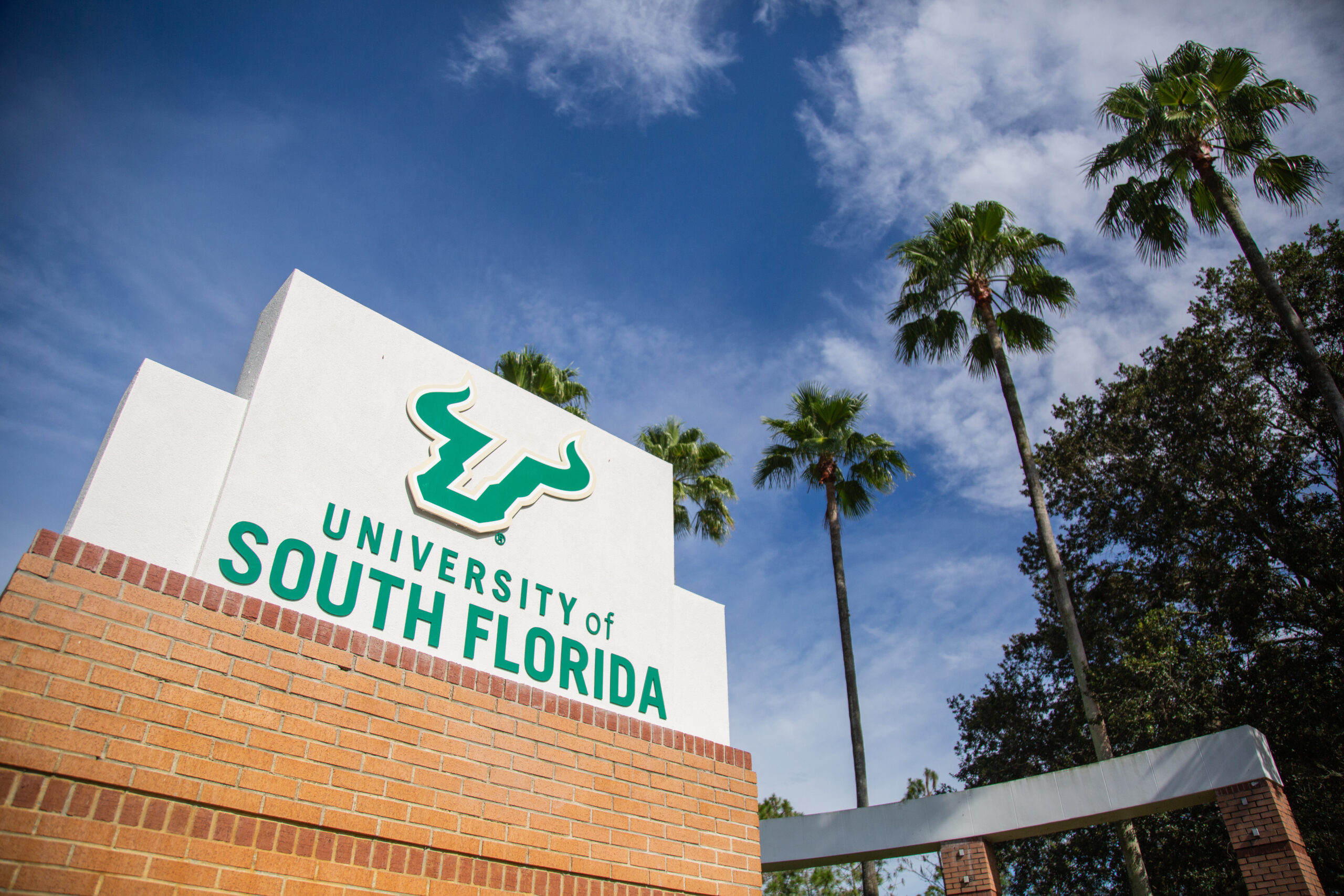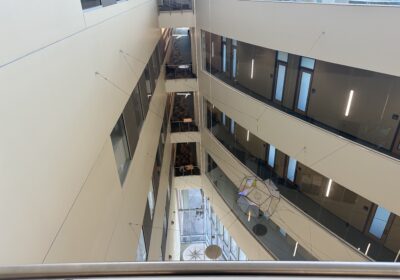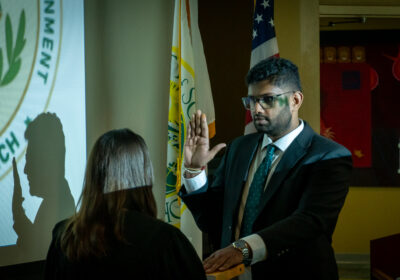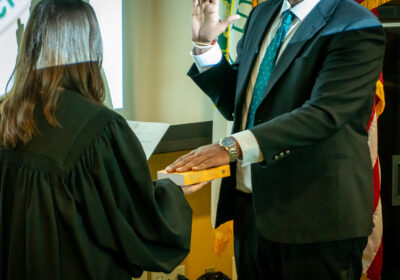Fresh look: USF updates campus entrance monuments, signs

The old USF academic logo — the “USF” in a block-like font with the “University of South Florida” under it — is in its final days as the university updates monuments and signs across campus to feature the Bull-U academic logo.
The Office of Administrative Services started phase I of a three-phased project on July 22 by updating all monument signage around the perimeter of the Tampa campus, including three corner monuments, the main entrance monuments between LeRoy Collins Boulevard and East Fowler Avenue and the monuments located at the intersection of USF Palm Drive and East Fletcher Avenue.
The university also updated monuments at 10 different university entrances, the corner monument signage for “The Claw” golf course, the digital sign monument between LeRoy Collins Boulevard and USF Alumni Drive, and the USF Riverfront Park entrance monument.
With a budget of $181,000, Assistant Director of Communications for Administrative Services Aaron Nichols said the final cost for all of the signage removal, monument maintenance and painting as well as signage installation was $175,000 for the Tampa campus. Funded by facilities management, Nichols said the funds were carried forward from the 2017 Public Education Capital Outlay (PECO) budget.
“There was quite a bit of work involved,” Nichols said. “It wasn’t just a matter of popping off the old logo and it was stuff that really needed to be done … they were ready for a facelift anyway.”
With funds still remaining, Nichols said the Office of Administrative Services will also be updating the USF signage on the north side of the Student Services building at the Tampa campus — a popular photo spot for graduation pictures.
Nichols said the sign is currently in production and could be installed within the next two weeks.
“We had quite a bit of money left over so, since that was so highly visible and it needed to be replaced anyway, we went ahead and did that,” Nichols said. “We still came in significantly under budget even with adding that extra work.”
The project began in April with a universitywide signage survey done by the Office of Administrative Services Communications and Marketing team, facilities management from all three campuses — Tampa, St. Pete and Sarasota-Manatee — as well as USF Health Facilities Management to record a photo, type, location and size of all exterior and interior signages around campus.
“I created a Qualtrics database and we used our phones to go all around campus and we actually took a picture, recorded a location and pulled measurements of every logo signage and piece of logo signage around the campus,” Nichols said.
Over a one-month period, the survey recorded over 500 signage items, including from both exterior and interior spaces, across all three campuses. Each entry featured a photo, type, location and size of the logo, according to Nichols.
After reviewing the data collected, Nichols said the survey found approximately 350 signage items, ranging from vinyl decals to exterior building signage that were not consistent with USF’s current visual identity standards.
Phase II will replace exterior signs inside the campus, including way-finding monuments on campus such as vehicular and pedestrian signage. The final phase will then update all signage inside buildings across campuses.
Nichols said phases II and III haven’t been planned as there’s no funding available yet.
Besides giving the campus entrance a new look, Nichols said consolidation was also a driving factor during the project. He said the signage needed to be updated to “reflect the new USF visual identity standards” as well as make the university signage “consistent.”
“Consolidation was part of what drove the signage change,” Nichols said. “We needed to make sure all the signage … was consistent.”







